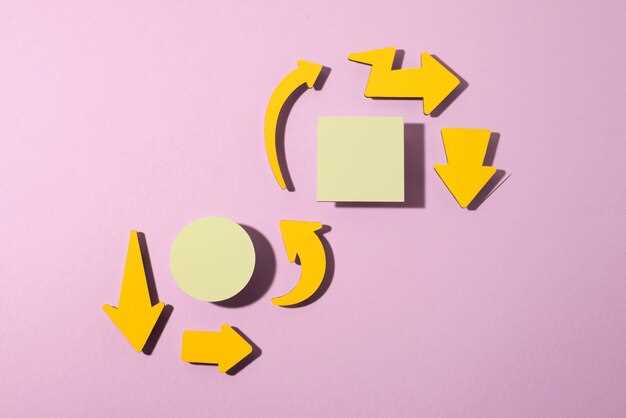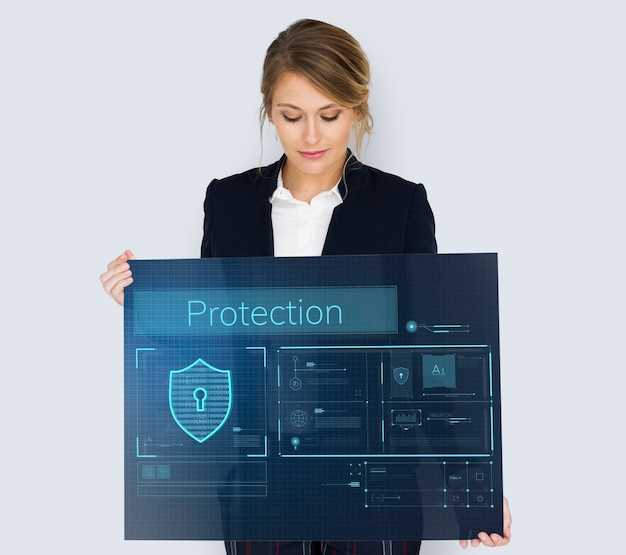Accelerate your project delivery by integrating Scrum methodology. This agile framework unleashes team potential, significantly reducing time to market. Companies embracing Scrum experience quicker iterations, enabling rapid adjustments to changing requirements while maintaining high-quality outcomes.
Scrum relies on clear roles and responsibilities within the team. Scrum Masters guide teams to overcome obstacles, allowing developers to focus on core tasks. Meanwhile, Product Owners prioritize backlog items, ensuring alignment with business objectives and reducing wasted effort. This structured approach streamlines processes and enhances team productivity.
Frequent feedback loops within Scrum foster continuous improvement. Teams conduct regular sprints, reviewing results every few weeks. This iterative nature encourages early detection of issues, reducing technical debt and ensuring solutions remain aligned with user needs. As a result, teams can adapt swiftly, delivering features that consistently meet client expectations.
Understanding Scrum Practices that Accelerate Delivery

Streamline your project workflow with daily stand-up meetings. These quick gatherings help the team stay aligned, address obstacles, and adjust plans when necessary. By keeping discussions concise and focused, you ensure everyone knows their responsibilities for the day, reducing the downtime caused by miscommunications.
Break down larger tasks into manageable sprints, usually lasting two to four weeks. This structure creates clear short-term goals that keep teams motivated and focused. Committing to deliver a “done” product increment at the end of each sprint pushes the team to maintain pace and quality, avoiding the crunch time seen in traditional project timelines.
Leverage the clarity gained from well-defined roles within the Scrum team. By understanding their specific contributions, team members can collaborate more productively, minimizing the overlap and confusion often found in more loosely structured groups.
Foster continuous feedback with review and retrospective sessions at the end of each sprint. Use these opportunities to identify successes and areas for improvement, then apply those insights immediately in the next cycle. This iterative learning process not only speeds up delivery but also gradually enhances the quality of the final product.
Prioritize work through an active and well-defined product backlog. Keep it groomed and updated, ensuring that the most valuable tasks are tackled first. By focusing on delivering the highest priority features, teams can maximize the value delivered in the shortest amount of time.
How Daily Stand-Ups Contribute to Faster Problem Solving
Implement daily stand-ups to accelerate issue resolution and keep the team aligned. During these brief meetings, share updates, address blockers, and allocate tasks effectively, reducing delays caused by communication gaps. Daily stand-ups create an environment where team members freely discuss challenges, fostering a collaborative culture that promotes proactive problem-solving.
- Identify Blockers Early: Address complications before they escalate. Encourage team members to voice their current issues promptly, preventing needed resolutions from slipping through cracks.
- Promote Accountability: Having each person speak to their updates ensures that everyone stays accountable for their tasks, encouraging swift action and responsibility over ongoing work.
- Improve Communication: Face-to-face interactions help eliminate misinterpretations that often occur via email or chat. Clear, concise discussion enhances mutual understanding across the team.
- Adapt to Changes: Stand-ups allow for quick adjustments to priorities or workload without waiting for formal meetings, keeping progress fluid and adaptive to project needs.
- Encourage Cross-Functional Collaboration: By involving diverse roles, daily interactions pave the way for innovative solutions, leveraging different perspectives to solve problems faster.
Capitalize on the power of daily stand-ups to cultivate an agile mindset, enabling your team to tackle problems efficiently and drive project momentum continuously.
Discuss the role of daily stand-up meetings in identifying and addressing issues promptly.
Implement daily stand-up meetings to enhance team communication and swiftly pinpoint obstacles. These brief gatherings enable team members to share progress updates, align efforts, and voice concerns without delay.
- Real-time Problem Identification: Encourage each team member to briefly describe their current tasks and any encountered issues. This method surfaces problems when they’re small and manageable.
- Facilitating Immediate Solutions: Leverage the diverse expertise within the team to brainstorm and propose solutions on the spot, minimizing downtime for those affected by issues.
- Transparency and Accountability: Foster an environment where open communication is valued, promoting accountability among team members as they commit to resolving impediments by the next meeting.
- Preventing Backlog Build-up: Address potential blockers daily to prevent them from accumulating and hindering project progress.
- Streamlined Adaptation: Allow teams to quickly adapt their strategies based on daily insights, maintaining momentum and adjusting priorities as needed.
By integrating routine stand-ups, teams achieve a proactive culture where challenges are addressed early, maintaining collective focus on delivering value efficiently.
The Role of Timeboxing in Enhancing Task Completion
Implement timeboxing to improve task completion rates by setting fixed, dedicated periods for specific activities. Allocate specific intervals for tasks instead of open-ended schedules. This approach reduces procrastination and enhances productivity.
- Boosts Focus: Concentrate on one task without distractions by establishing a clear endpoint. This helps in achieving clarity and fostering deeper engagement with the task at hand.
- Enhances Prioritization: Use time limits to prioritize tasks effectively. Assign realistic durations based on task complexity, enabling better project management and resource allocation.
- Improves Estimation Skills: Practice refining time estimates by comparing timeboxed intervals with actual completion times. This practice sharpens accuracy and prediction skills over time.
- Increases Accountability: Share timeboxes with team members to create shared timelines and accountability. This transparency heightens team motivation and fosters a sense of responsibility.
- Facilitates Iterative Progress: Break larger projects into manageable chunks, allowing for iterative progress and adjustments. This incremental approach minimizes risks and optimizes workflow.
Schedule regular reviews of timeboxed sessions to assess effectiveness and make necessary adjustments. This iterative refinement cultivates a dynamic and adaptive approach to task completion, ensuring optimal outcomes and continuous improvement.
Explain how strict time constraints help teams focus and deliver on time.
Set specific deadlines in shorter intervals, like two-week sprints, to maintain high levels of concentration. This approach prevents teams from becoming complacent, as each sprint has clear goals that need attention and completion.
Use a prioritization matrix that highlights which tasks are most urgent and important. By assigning them based on this matrix, team members remain focused on work that directly impacts the project’s progression.
Hold daily stand-up meetings lasting no more than 15 minutes. These daily check-ins keep tasks clear, align team members, and ensure everyone is accountable for their part in delivering results.
Divide projects into smaller, manageable components, enabling teams to work with clear deadlines. This division reduces overwhelm and makes objectives more attainable within tight timeframes.
| Method | Description |
|---|---|
| Sprint Deadlines | Shortened timeframes increase urgency and focus on delivery. |
| Prioritization Matrix | Keeps the team’s attention on tasks that impact the project’s progress directly. |
| Daily Stand-ups | Brief meetings align team efforts and maintain accountability. |
| Task Division | Breaking down projects ensures clarity and manageable workloads. |
Sprint Planning Techniques for Optimized Workflow
Incorporate timeboxing into your sprint planning to enhance focus and productivity. Limiting discussions to short intervals helps teams prioritize tasks effectively without dwelling on less critical issues. Balance the workload by analyzing each task’s complexity and distributing efforts according to team members’ skills, ensuring neither burnout nor underutilization.
Encourage active collaboration and transparency during the sprint planning meeting by using visual tools like burndown charts or Kanban boards. These visuals make progress visible and help identify potential bottlenecks early, allowing for timely adjustments.
Ensure each team member’s understanding of the sprint goals aligns with customer expectations. Keep communication open and consistent, fostering a shared vision of success that motivates the team to achieve its objectives. Empower the product owner to clearly articulate priorities and criteria for accepting each feature or task, avoiding ambiguity and misalignment.
Plan for flexibility by including buffer time for unplanned work or changes, which are inevitable in agile projects. This proactive approach helps maintain momentum without compromising on quality. Regularly review past sprints to identify patterns and continuously improve your planning strategy, leading to a more streamlined and adaptive workflow.
Explore methods for aligning team goals with Sprint tasks to maximize workflow efficiency.
Define clear, achievable sprint goals. Engage the entire team in goal-setting discussions to ensure alignment and understanding. Use SMART criteria (Specific, Measurable, Achievable, Relevant, Time-bound) to formulate these goals and connect them to the broader objectives of the project. This shared vision enhances motivation and clarifies priorities.
Implement backlog refinement sessions as a collaborative space where team members can align their individual tasks with the sprint goals. Encourage open communication to surface dependencies and potential obstacles early, ensuring that each task is strategically aligned with achieving the sprint objectives.
Utilize a Kanban board or other visual tools to make the workflow transparent. This aids in tracking progress and adjusting tasks in real-time while maintaining alignment with goals. Regularly update the team during daily stand-ups to ensure everyone remains focused on the sprint’s priorities.
Encourage feedback and continuous improvement. After the sprint, conduct retrospective meetings to discuss what worked and what didn’t. Use these insights to refine future sprint planning, ensuring tasks remain synchronized with evolving team goals. This adaptive approach fosters a dynamic and efficient workflow that meets both current and future objectives.
Utilizing Retrospectives for Continuous Improvement
Organize retrospectives at the end of each sprint, focusing on clear objectives for improvement. Encourage your team to actively participate in discussions by creating an open and safe environment, where all opinions are valued equally. Use these meetings to identify small, actionable changes that can be implemented immediately, rather than overwhelming the team with a daunting list of improvements.
To maximize the effectiveness of retrospectives, structure them around prepared agendas and data-driven insights. Gather and present data on the sprint’s progress, such as velocity, completed tasks, and any obstacles encountered. This objective information helps the team focus on factual problems rather than subjective perceptions.
| Aspect | Current State | Action Plan |
|---|---|---|
| Team Communication | Lack of clarity in task delegation | Adopt daily stand-ups and clear task assignments in project management tools |
| Sprint Planning | Frequently over commitments | Introduce capacity planning sessions to assess workload accurately |
| Feedback Integration | Delayed responses to identified issues | Set a dedicated time for immediate feedback implementation post-retrospective |
After the retrospective, commit to implementing at least one of the suggested improvements in the upcoming sprint. Track the impact of changes by comparing subsequent sprint performance metrics. Regularly revisit effective strategies, iterating as teams evolve and as project demands shift.
To encourage accountability, document the outcomes and action items of each retrospective with clear ownership. This transparency ensures continuous engagement and keeps the team aligned with the overarching goals, driving sustainable progress and enhancing delivery speed.
Describe how regular feedback sessions enable teams to continuously refine their processes.
Hold brief and focused feedback sessions, commonly known as retrospectives, at the end of each sprint. These meet-ups help identify strengths and pinpoint areas needing improvement. By fostering open communication, teams create an environment where candid conversations drive meaningful change.
Sprint retrospectives encourage transparency. Team members share their perspectives on what went well and what didn’t, which allows for the collective identification of bottlenecks and inefficiencies. This process ensures that issues are addressed promptly, curbing potential setbacks while also developing better strategies over time.
Actionable insights gained from these sessions empower teams to implement small but impactful changes in the next sprint. For example, if the team identifies communication lags as a problem, they can adjust by scheduling more frequent touchpoints, thereby improving coordination and reducing delays.
Feedback loops also cultivate an adaptive mindset. As team members become accustomed to regular feedback, they develop resilience and agility, enabling them to embrace change as a part of their routine. This adaptability translates into a more dynamic process, where continuous refinements align with project goals more effectively.
Measure the outcomes of these adjustments in the following sprints to evaluate their success, ensuring that processes remain aligned with both team efficiency and project objectives. Iteration and constant improvement become embedded in the team culture, boosting overall productivity and delivery speed.
Ultimately, integrating regular feedback sessions as a staple in your workflow allows teams to transform lessons learned into actionable strategies, driving consistent process enhancements and fostering a culture of continuous learning and improvement.
Navigating Team Dynamics and Productivity in Scrum

Ensure open lines of communication by conducting daily stand-ups where each team member can provide updates on their tasks, discuss challenges, and share insights. This approach not only helps to address issues promptly but also reinforces a culture of transparency. Encouraging such dialogues fosters trust and collaboration.
Empower team members by allowing them to self-organize and manage their workloads. Rather than assigning tasks, let individuals choose what they can commit to within sprint planning sessions. This autonomy increases accountability and motivates team members to manage their tasks more effectively.
Another strategy is to implement regular retrospectives to reflect on both successes and areas for improvement. These sessions should focus on actionable feedback and concrete strategies for improvement. By iterating on these strategies, teams can continuously enhance their workflows and performance.
Streamline processes by utilizing tools like Scrum boards to visualize progress. This visibility helps identify bottlenecks early and encourages proactive solutions. Regular backlog grooming sessions also ensure priorities are clear and aligned with the sprint goals, minimizing surprises or shifts in focus.
Finally, balance workloads by monitoring capacity and adjusting resources as needed. Understanding each team member’s strengths and current load allows for better distribution of tasks, ensuring no one is overburdened and all goals are attainable.
Video:

Key Foundations of Agile & Scrum Project Management | Google Career Certificates
Key Foundations of Agile & Scrum Project Management | Google Career Certificates
Q&A:
How does Scrum specifically help in increasing the delivery speed of a project?
Scrum boosts delivery speed by breaking work into smaller, manageable chunks called sprints. This allows teams to focus on clear tasks with defined goals in short cycles, typically lasting two to four weeks. During each sprint, the team can adapt to feedback quickly, resolve issues, and deliver functional components at a faster pace. This iterative approach reduces the time spent on perfecting a project from start to finish, allowing for more frequent releases.
Can you explain how short iterations in Scrum improve the workflow?
Short iterations, or sprints, improve workflow by promoting focus and adaptability. Team members concentrate on a limited set of tasks, allowing for an efficient use of time and resources. This focus reduces multitasking and the spread of attention across too many tasks. Additionally, frequent sprint reviews give teams the chance to adjust plans and priorities based on immediate feedback, which helps prevent wasted effort and ensures that the project evolves according to stakeholder needs.
What role does the Scrum Master play in ensuring quick and successful deliveries?
The Scrum Master acts as a facilitator and removes any impediments that may slow down the team’s progress. This role involves coordinating between team members, stakeholders, and management, helping to ensure that everyone is aligned with the project’s goals. By safeguarding the Scrum process and encouraging continuous improvement, the Scrum Master helps maintain high productivity levels and keeps the team focused on meeting sprint objectives effectively.
Is Scrum adaptable to different types of projects, or is it mainly effective in software development?
While Scrum originated in the software development sector, its principles are adaptable to various types of projects across different industries. The framework’s versatility lies in its focus on iterative progress, team collaboration, and flexibility, which are valuable in fields such as marketing, research, and event planning. Teams can modify the framework to fit their specific needs while retaining the core elements of regular feedback loops and collaborative planning.
Can using Scrum lead to higher team morale? If so, how?
Yes, using Scrum can significantly boost team morale. The structure of Scrum promotes active participation from all team members by encouraging their input during planning sessions and retrospectives. This inclusive environment fosters a sense of ownership and accountability, leading to higher job satisfaction. Moreover, the regular recognition of achievements after each sprint and the transparent communication of goals and progress contribute to a positive and motivated work atmosphere.
How does Scrum specifically improve delivery speed compared to traditional project management methods?
Scrum enhances delivery speed by dividing the project into smaller, manageable sprints or iterations. Each sprint typically lasts two to four weeks, allowing the team to focus on delivering a potentially shippable product increment within that time frame. This structure facilitates better planning and more frequent feedback, which can quickly address issues and adapt to changes, resulting in faster overall project delivery. Traditional methods often rely on a longer timeline and a more rigid plan, which can slow down responsiveness to necessary changes.
What role does the Scrum Master play in boosting a team’s productivity and delivery speed?
The Scrum Master serves as a facilitator and coach for the team, ensuring that the team adheres to Scrum practices and principles. By removing impediments, the Scrum Master ensures that the team can maintain its focus on the tasks at hand. They also help to foster a culture of continuous improvement, encouraging team members to reflect on their processes and outcomes after each sprint through retrospectives. This continuous feedback loop and support structure helps teams improve over time, enhancing both productivity and delivery speed.



